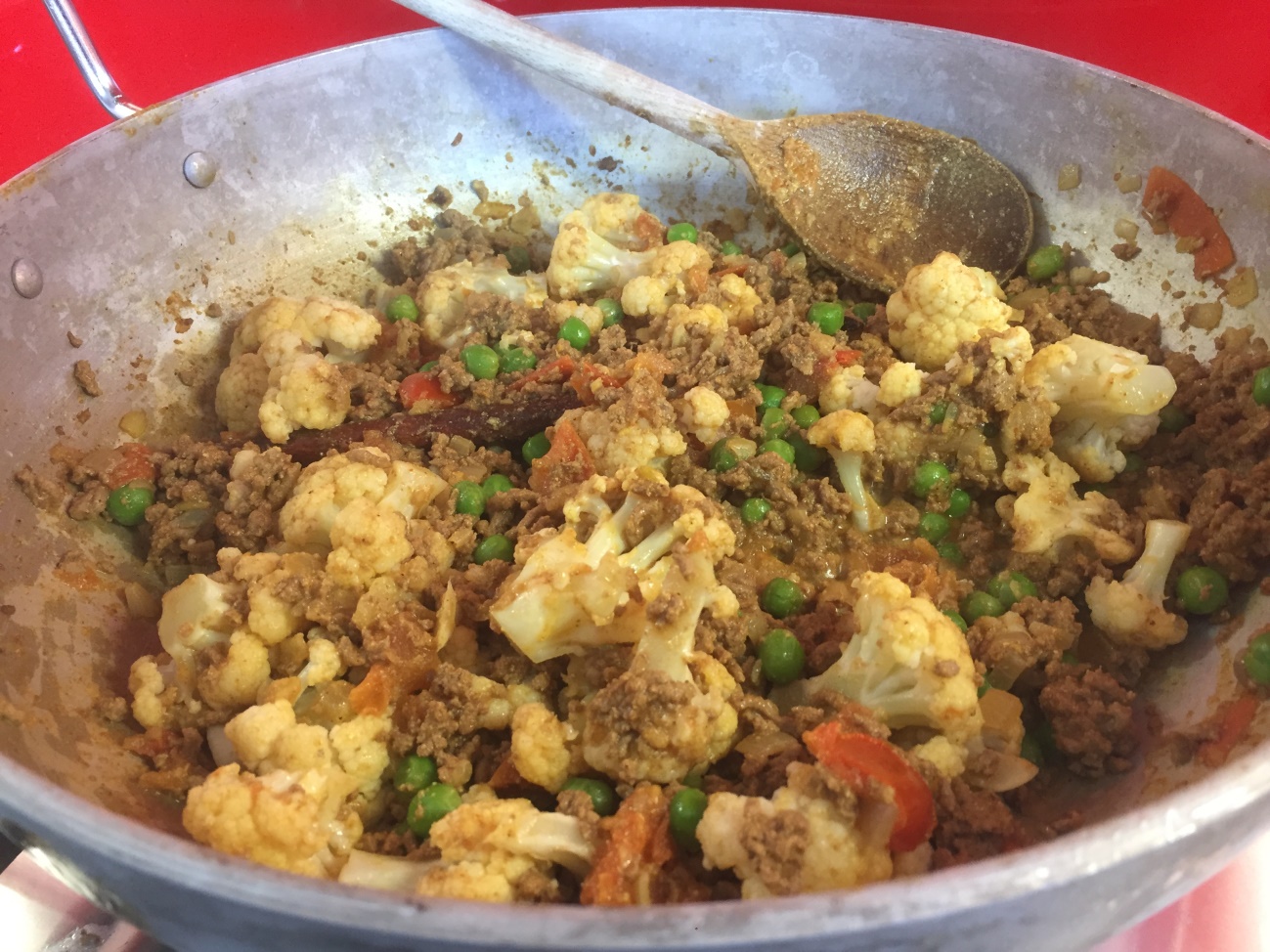Keema (Curry)
Growing up as a child in the 1960s and early ‘70s, food in Australia was a pretty staid affair, consistent with what one might think of as ‘traditional British food’, not surprising given Australia’s (post-European) British history. My mother was a very good cook, winning awards at shows for her cookery, and we ate adventurously for the time, but even with that it was still far removed from the sorts of things we eat today. While post World War II migrants had been arriving from Europe since 1945, their cuisine had not been readily adopted, but things started to change following the influx of refugees from Vietnam commencing in 1975. I can still remember quite vividly my first visit to an Asian food hall around 1981 when I was a poor university student.
Curry, probably a staple in many homes today, was definitely on the exotic list in those early times. About as racy as it got was the ‘sweet curry’, the dominant ingredients being mince, curry powder and sultanas. You can find these sweet curry recipes in old recipe books of the time. I like mince as an ingredient, but curry recipes that make use of it are rare. One of the very few, and it is excellent, is Keema, an Indian style curry. It takes very little time, and you can pair it with rice and/or some sort of flatbread (such as Naan or Roti), or pappadums. These things are readily store-bought items, but of course you can make them yourself. Ready-made pappadums in particular I find easier to buy from the store to avoid the whole deep-frying thing. There’s a local Indian food store near me that has pappadums in tubes like Pringles that are excellent.
If you have a karahi to cook it in so much the better, but as usual in cooking you really can get by without too much specialised equipment. Any receptacle capable of transferring thermal energy from the base to the contained contents will do. A karahi is a circular, deep cooking pot similar to a wok but with a flat base. Traditionally used in India and that region, they are now made from various materials. Mine is aluminium, but I’d like to get a steel or preferably stainless steel one. You can pick them up very cheaply from Indian food stores – my local has plenty.
This being my first post, please forgive my photography. It’ll improve with time.
Comments or questions? Like my Facebook page.

Keema
Cooking: 20 minutes
Serves: 4
Ingredients:
- 2 tablespoons ghee (or 1 tablespoon butter, 1 tablespoon olive oil)
- 1 large onion, chopped
- 2 teaspoons crushed ginger, (or fresh ginger, finely chopped)
- 1 clove garlic, finely chopped
- 1 stick cinnamon
- 4 cloves
- 4 cardamon pods, bruised
- ½ teaspoon turmeric powder
- ½ teaspoon chilli powder
- 500g lamb or beef mince
- ¼ - ½-head cauliflower, separated into florets
- 2 tomatoes, chopped
- 3 tablespoons natural yoghurt
- 1 teaspoon salt
- 1 teaspoon garam masala
- 1 cup frozen peas
- Rice, pappadums or flat bread, to serve
Directions
- Heat the ghee over medium-low heat and gently fry the onion, ginger, garlic, cinnamon, cloves and cardamom for 3-4 minutes. Add the turmeric and chilli powder and fry until fragrant , then add the meat, breaking up with a wooden spoon or whisk until it begins to change colour.
- Cover the pan and simmer gently for 5 minutes. Add cauliflower, re-cover and simmer for another 5 minutes.
- Add the tomatoes and yoghurt, salt and garam masala and cook for another 5 minutes. Add the peas and cook for another 3-4 minutes. (Hint: to prevent the yoghurt from curdling, put it in a container and stir in a spoonful of the mince sauce. Repeat another 2-3 times, then add the yoghurt mixture to the pan)
- Season to taste and serve with accompaniments.
